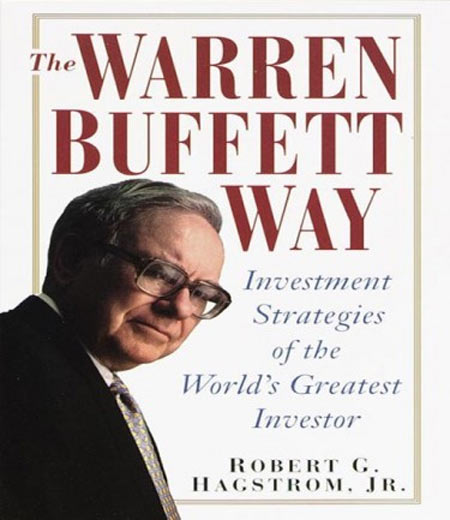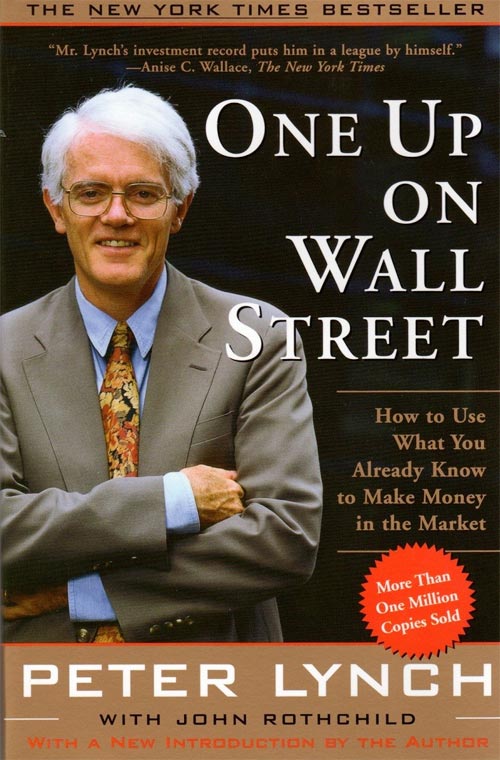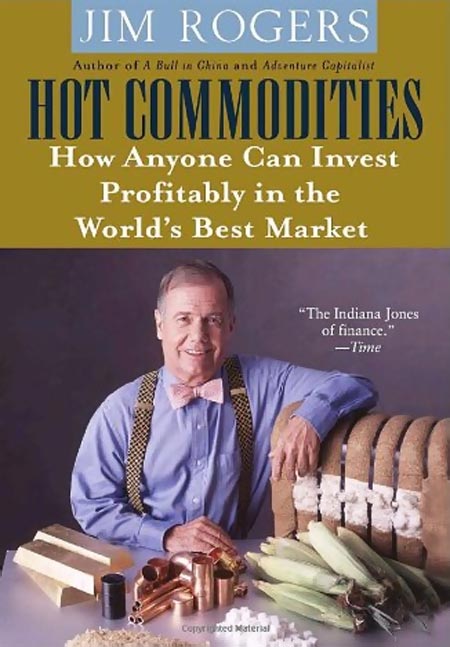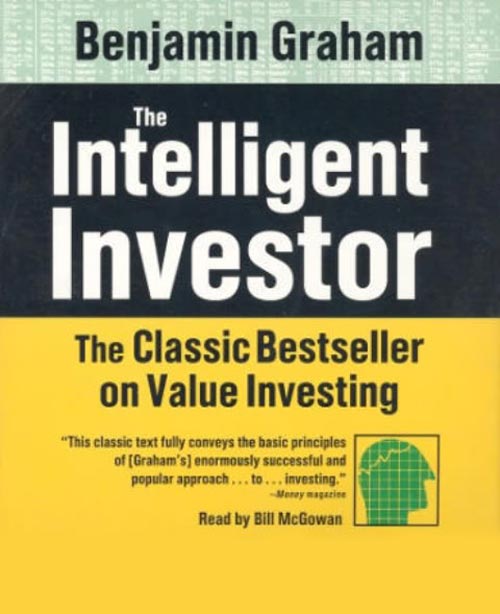 | « Back to article | Print this article |
MUST READ: Top 5 books for young investors
These books are the best guides for young investors in the rough and tumble of the stock, currency and commodity markets.
Investing is one of those skills that take just a week to learn but a lifetime to perfect. And what's better than reading classic investment books to learn and perfect this skill to nurture your life with returns and rewards. Here is a quick review of top 5 all-time best books published in the world of investing. Simple and easy these books are enough for a non-finance professional to read and understand the basics of investing.
With hundreds of new investment books appearing on shelves each year, a top-5 shortlist is very difficult to determine. But some books are just irreplaceable because of the sheer genius of the writer and their marquee content. Here is a quick insight into what is best at the investment bookshelf:
StockFundoo.com provides insightful and in-depth capital markets analysis. Powered by fundamental deep value investing and technical analysis, we offer detailed stock analysis updated on a daily basis.
MUST READ: Top 5 books for young investors
The Warren Buffett Way: Investment Strategies of the World's Greatest Investor by Robert G Hagstrom (1997)
There is no dearth of good books on the greatest investor of our times: Warren Buffett. And there is no shortage of stories about this legend as well.
Buffett, also known as 'The Oracle of Omaha', is famous for his iconic investments in Coca Cola, Gillette, American Express, Wal-Mart, The Washington Post, GEICO and so on. He purchased a struggling textile mill early in his career, Berkshire Hathway, and turned the firm around into an asset holding company.
Last known assets of Berkshire Hathway ran into $62 billion, and he has been holding his stock investments for decades now.
The book highlights the key aspects of Warren Buffett value investment methodology.
The company Buffett is looking to invest should have simple-to-understand business model, sustainable competitive advantage or defendable 'Moat' around the business and sufficient large scale as well.
Additionally, Buffett looks for honest and dedicated management team, consistent earning power, and little or no debt on books. Finally, Buffett looks for good value price to buy the stock.
As per Buffett, it's most important to get entry into a stock at a good value price, because you can never dictate the exit price. So the purchase price should have a margin of safety, so that even if markets close down for the next 10 years, you should not repent or think about exiting the company in haste.
MUST READ: Top 5 books for young investors
One Up On Wall Street byPeter Lynch (1989)
Peter Lynch is the guru of growth investing and gave a very simple mantra to investors: Invest in names that you know. That is, buy companies that you see everyday around you and admire for their quality, trust and good brand name.
Lynch was running one of the most successful mutual funds of our times -- Fidelity Investments' Magellan Fund -- for over thirteen years. Over his thirteen years of running Magellan, the fund returned a phenomenal 29.2 per cent return compounded annually. That's double that of S&P's 15.8 per cent returns over the same period, and is almost impossible for any equity mutual fund to surpass in modern history for this long a timeframe.
An investor having invested $ 10,000 into Magellan fund the day Lynch began managing, would have a staggering $280,000 corpus 13 years later when Lynch left the fund.
One Up on Wall Street is Lynch's own story, told by him and by co-author John Rothchild. Lynch believed that everyday investor could do better than sophisticated fund managers, because of the simple investment fundamentals Lynch explains in this book.
Lynch believed that as small retail investors you can know the best companies because you interact with them on daily basis, you can invest in upcoming small cap companies which large funds simply cannot because they have a mandate of investing in large, liquid companies only. And as a retail investor, investing your own capital you don't have the pressure to deliver every quarter, so you can take a medium term or long term view in a company which can emerge into a star tomorrow and buy that at today's value price.
Lynch believed in his own mantra, and unlike a typical mutual fund, he invested in several small caps, some of them later emerged to be 'ten-baggers' -- a phrase coined by Lynch himself. At one point of time, his fund Magellan was invested into 1,400 different companies, and Magellan's competition used to say that Magellan has actually invested in the entire stock market itself! With his commonsense investing mantra and keep-it-simple investing model, Lynch is guru and role model for all modern day retail investors.
MUST READ: Top 5 books for young investors
Hot Commodities: How Anyone Can Invest Profitably in the World's Best Market by Jim Rogers (2004)
Jim Rogers is the most colorful of all investment gurus. He has travelled around the world on his motorcycle, rode through 116 countries, took his wife along with him and scouted for investment opportunities in remotest areas such as Africa's battle-torn regions, Asia, Latin America, remotest parts of Australia and snow covered erstwhile USSR.
In his initial career years, Rogers worked as a partner with George Soros, who is famous for taking a bet against GBP (the Great Britain Pound) and known as the person who broke the bank of England through his gigantic GBP trading call.
Rogers is a renowned commodities guru and is often featured on television channels speaking his mind on investment in agro commodities, investment in gold, his affection for China and his famous apathy for currencies. His book, Hot Commodities: How Anyone Can Invest Profitably in the World's Best Market is one of the best commodity guide for common investor looking to learn the seemingly complex world of commodities such as crude oil, precious metals, agro commodities and base metals.
Rogers defines the fundamental need for investors to realise that although currencies can be printed ad infinitum, natural commodities cannot be made artificially. So an obvious bet for long-term investor is to invest in commodities because they will appreciate due to asset bubbles, growing demand and limited supply of agricultural land, oil wells and metal mines. Through his lucid and entertaining approach, Rogers explains the myriad methods of commodity world in arguably the best book written on commodity investing till date.
MUST READ: Top 5 books for young investors
The Intelligent Investor by Benjamin Graham (1949)
No discussion on investing or a list of investment books would be ever complete without mentioning the guru who started it all. Graham is known as the father of value investing. Before Graham laid down the basic principles of how to value a stock, stock investments were just looked upon as speculative instruments bought and sold for immediate short-term profits. Graham is also famous for his most well known pupil, Warren Buffett, who describes Graham as the fundamental influence on his investing methods.
Graham in his book The Intelligent Investor lays down the framework on how to value a stock and what is the best value price to buy a stock. Value investing differs from the proponents of 'efficient markets' who think that stock market is an efficient judge of stock prices at all times. Value investing believes in investing when the market is poorly valuing a good company and getting out when market is richly valuing a company with average fundamentals.
'Mr Market', a phrase coined by Graham is the most apt description of stock markets, which are often swayed by panic attacks into the depth of crashes or buoyed into crazy valuations during the heights of optimism. 'Mr Market', as per Graham, is manic depressive and is either too happy or too depressive, and hence at most times offers an opportunity to either buy at value price or sell at costly prices and hence make profit for value investors.
Graham has made immense contribution to the field of stock investing and this book is a must read for serious investors. Only issue the reader might face is that the case studies and companies described would not be recent as this volume was published decades earlier, however the investing principles would be applicable today as well as they were applicable half century ago.
MUST READ: Top 5 books for young investors
Reminiscences of a Stock Operator by Edwin Lefevre (1923)
Reminiscences of a Stock Operator is the odd one out in this top 5 reading list. This is not your typical investment bible, but story of biggest ever stock speculator of our times -- Jesse Livermore. This novel was described as a 'font of investment wisdom' by Alan Greespan, for bringing to life, the very nature of stock markets, stock investments and human behaviour.
Livermore started his journey through bucket shop stock trading when he was just a kid, and soon enough all bucket shop owners knew which customer to avoid! The kid on the block used to make a clean sweep by his acumen, his tape reading skills and his understanding of human sentiment, which plays an equally strong role at a bucket shop as it does in oak panelled board rooms of billion dollar investment houses.
The oldest and most apt pearls of investment wisdom come routinely from this book, such as this one: It never was my thinking that made the big money for me. It always was my sitting. You always find lots of early bulls in bull markets and early bears in bear markets. I've known many men who were right at exactly the right time, and began buying or selling stocks when prices were at the very level which should show the greatest profit. Men who can both be right and sit tight are uncommon: Jesse Livermore
Livermore made his fortunes several times on Wall Street and lost it one time too many. He died a death of penury, but taught so many valuable skills to generations of stock market investors as to how to recognise human sentiment in markets, how to spot a bull run and bear rampage early on, how to sit tight through the bull-run to maximise your profits and finally how to exit when the going is still good.
For these reasons and many more, this book always finds a place in any top-5 list of investment classics.






